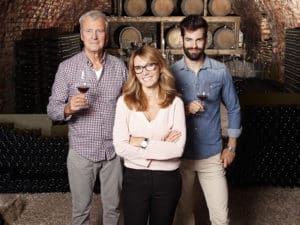Whenever you engage with a business in your community — whether it’s at the grocery store or the drive-thru at the bank — you experience a touch point as a consumer. Sometimes I dream about wearing a camera on my head so I can show examples of what’s going well, and not so well, in these interactions.
Unfortunately, it seems that every place I go lately I walk out disappointed with the service level, even with businesses that say they provide the best service. The reality is that businesses risk losing a customer or client each time an experience is not up to par.
There’s good news, though. Organizations can make simple changes to ensure they provide great customer experiences. And I believe that, as women in business, we can help lead this charge for our organizations by being creative, innovative and cognizant in the way we serve clients.
Understanding Touch Points
By itself, a business is not a living, breathing entity. It takes people, and what makes a business different is the way it feels to interact with those who work there. Businesses may call this the customer touch point, but I like to call it the human touch point.
Doing so means being mindful that a human being is involved with each exchange, no matter what the exchange is — an in-person interaction, an email, a phone call or a virtual experience. It’s much more than a data point.
The human touch is what brings an entity to life and provides the positive experiences so needed today, especially in the era of the Great Resignation. Employees are leaving their jobs in record numbers, for many reasons. Whether they’re looking for a different kind of culture, better work-life balance or to feel valued in their role, employees are yearning for something different and taking action to experience it.
Customers want a different experience, too. They want to feel like they’re being treated like a human being and interacting with a human being. The dread of picking up the phone to talk to a representative in customer support about a billing issue or in tech support about a purchased product should not be part of the experience.
Yet it’s common. From the first contact with a frontline employee to every other interaction a customer has with your organization, positive experiences with humans and touch points can create referrals and build loyalty. Those kind of ripple effects are often long-lasting and beneficial to the bottom line.
Creating Meaningful Experiences
In more than 20 years of working as a learning and development (L&D) leader, consultant and career coach, I’ve had the opportunity to work with corporations and individuals to create successful experiences. Your business may not have dedicated talent ambassadors, an L&D team or a budget to hire consultants. But you can create an experience of excellence where your customers and clients feel valued and that they matter to your company.
Small changes often make a big difference. Here are three you can implement, starting today.
Determine who your heroes are
At TrainingPros, we have two sets of heroes: our consultants and our clients. My role as talent ambassador is to coach our L&D consultants to build their capabilities and offer the best staffing solutions to our clients. And we want our clients to have continual experiences of excellence when they interact with us.
In looking at who the heroes are in your business, think about who you plan to please. That often involves a mix of employees and clients. What’s important to them? And how can you deliver that in the context of your product or service, in creative and innovative ways?
Enhance every touch point
One of the best ways to get an understanding of what a customer’s experience is like is to go through it yourself and see how it feels from a personal perspective. Then, from the business side of things, explore every portion of your organization more deeply.
Start by evaluating all clients’ touch points, across the entire organization, and understand where the gap is in providing a personalized connection. Every client-facing facet of the company must be addressed.
For example, TrainingPros CEO Leigh Anne Lankford decided to go through our company’s online registration process. This is where new consultants can register with TrainingPros and create a profile that includes a resumé.
One of the first things she realized was that we were collecting more information than was needed in a first touch point. She saw that we could ask for information in phases: critical data first that is quick to fill out, then a more in-depth profile. A simple change was made to adjust how we collected information and identified who might be ready for the Phase 1 or Phase 2.
Capture and measure feedback
Hearing from customers is critical. You need points of reference to know how your touch points are functioning in their minds, how they feel after interactions and more. You can do this with follow-up email surveys or after-contact phone surveys, or by inviting customers to reach out and share their experiences.
In another TrainingPros example, I created a survey to touch base with our consultants after each point of connection they make with us. I included questions to understand how the touch point made them feel. And a specific one about whether their experience made them want to work with TrainingPros more or less.
We found that 100% said it made them want to work with us more. We are now capturing sentiment that wasn’t in place before. And, over time, we will be able to show the value in our changes.
Small changes really can make a big difference, both at a personal level and organizationally. Take action and keep yourself accountable to keep moving and improving. Prompt actions can garner immediate payoffs, like more referrals, customer retention and a healthy bottom line. And remember: Happy people refer people.
Nicole Darby is a learning and development (L&D) leader, working for 20+ years in large corporations and as a consultant and career coach, helping 2,000 individuals return to work or find dream careers. At TrainingPros, she makes each independent consultant feel welcomed and supported so they can offer the best L&D consulting to clients. She earned a master’s degree in human resource development from Georgia State University and a bachelor’s degree in broadcast journalism from the University of Florida. When learning leaders have more projects than they have people, TrainingPros can provide the right L&D consultants so they can start their projects with confidence. TrainingPros is a WBENC-Certified Women’s Business Enterprise. Visit TrainingPros for more information.
- Nicole Darbyhttps://www.womensbusinessdaily.com/author/nicole-darby/
- Nicole Darbyhttps://www.womensbusinessdaily.com/author/nicole-darby/
- Nicole Darbyhttps://www.womensbusinessdaily.com/author/nicole-darby/







